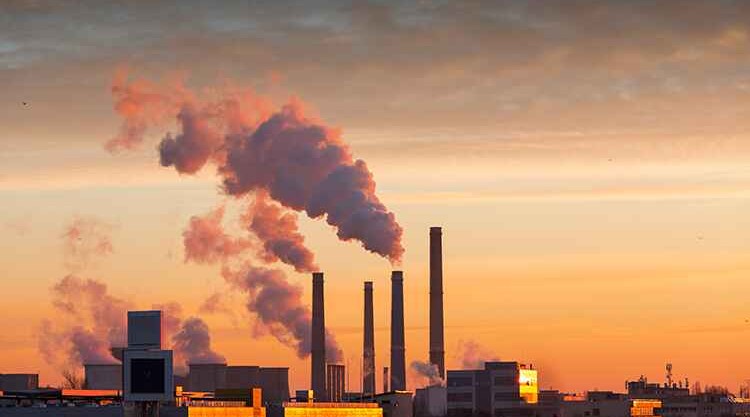Global carbon emissions rapidly rebound close to pre-COVID levels
Carbon emissions dropped by 5.4% in 2020 amid COVID lockdowns, but report projects an increase of 4.9% this year

Global carbon emissions this year are set to rebound close to pre-COVID levels with a 4.9% increase to 36.4 billion tons, according to a new report from the Global Carbon Project on Thursday.
The findings of the Global Carbon Budget come as world leaders meet at COP26 in Glasgow to address the climate crisis and try to agree on a plan of action going forward.
The research team - including the University of Exeter, the University of East Anglia (UEA), CICERO and Stanford University - say a further rise in emissions in 2022 cannot be ruled out if road transport and aviation return to pre-pandemic levels and coal use is stable.
According to the report, fossil carbon emissions dropped by 5.4% in 2020 amid COVID lockdowns, but the new report projects an increase of 4.9% this year to 36.4 billion tons.
"Emissions from coal and gas use are set to grow more in 2021 than they fell in 2020, but emissions from oil use remain below 2019 levels," the report stated.
Commenting on the findings, Pierre Friedlingstein, of Exeter's Global Systems Institute, who led the study, said that the rapid rebound in emissions as economies recover from the pandemic reinforces the need for immediate global action on climate change.
He explained that the rebound in global fossil CO2 emissions in 2021 reflects a return towards the pre-COVID fossil-based economy.
"Investments in the green economy in post-COVID recovery plans of some countries have been insufficient so far, on their own, to avoid a substantial return close to pre-COVID emissions," he added.
1.4 billion tons of carbon emissions cuts needed each year for net zero by 2050
Reaching net zero CO2 emissions by 2050 entails cutting global CO2 emissions by about 1.4 billion tons each year on average.
“Emissions fell by 1.9 billion tons in 2020 – so, to achieve net zero by 2050, we must cut emissions every year by an amount comparable to that seen during COVID,” he said.
Major emitters and their 2021 projections
The report also covered the major emitting countries, quoting figures that exclude international transport, particularly aviation.
Emissions in China are projected to rise 4% compared to 2020, reaching 5.5% above 2019 – a total of 11.1 billion tons of CO2 and 31% of global emissions.
Emissions in the US are projected to rise 7.6% compared to 2020, reaching 3.7% below 2019 – a total of 5.1 billion tons of CO2 and 14% of global emissions.
Emissions in the EU are projected to rise 7.6% compared to 2020, reaching 4.2% below 2019 – a total of 2.8 billion tons of CO2 and 7% of global emissions.
Emissions in India are projected to rise 12.6% compared to 2020, reaching 4.4% above 2019 – a total of 2.7 billion tons of CO2 and 7% of global emissions.
For the rest of the world taken as a whole, fossil CO2 emissions remain below 2019 levels.
Over the past decade, global CO2 net emissions from land-use change were 4.1 billion tons, with 14.1 billion tons of CO2 emitted by deforestation and other land-use changes, and 9.9 billion tons of CO2 removed by regrowth of forests and soil recovery.
To have a 50% chance of limiting global warming to 1.5°C, 1.7°C and 2°C, emissions have to be reduced by 50% by 2030.
The researchers estimate the remaining "carbon budget" has now shrunk to 420 billion tons, 770 billion tons and 1,270 billion tons respectively – equivalent to 11, 20 and 32 years at 2021 emissions levels.
